Digitizing up-to-30-ton machinery for exhibitions in VR with Artec 3D scanning
Challenge: Showcasing up-to-30-ton machinery to potential clients in a way that reduces the logistical burden behind shipping and displaying them at trade shows.
Solution: Artec Leo, Artec Ray II, Artec Studio, Blender, Unity, Microsoft HoloLens, HTC VIVE PRO
Result: A simulated showroom filled with huge machinery depicted in full size with stunning realism, including fine details like electrical boxes and wiring. HEMO has already held virtual exhibitions at many leading industrial trade fairs, with plenty more on the horizon.
Why Artec 3D?: Capturing wide areas using Ray II, before precisely digitizing each machine with Leo, streamlined the virtual world-building process. In Artec Studio, scans can be merged in a single click, accelerating the creation of an incredibly detailed simulation, packed with 3D models made using the highest resolution data possible.
One of the machine 3D models featured in HEMO’s VR simulation. Model courtesy of HEMO
If you’re at home in a factory, work in industry, or even if you’ve just been to a manufacturing exhibition, you’ll know that they all have something in common: massive machinery.
No matter what’s being made or marketed, these facilities are always packed with conveyors, generators, compressors, and other bulky units. But how do they actually get there?
Inside factories, they can be moved with anything from a forklift to a crane, or using machine skates – wheeled dollies for shifting things around the shop floor. However, for transportation between locations, huge multi-ton machinery often needs crating and shipping out.
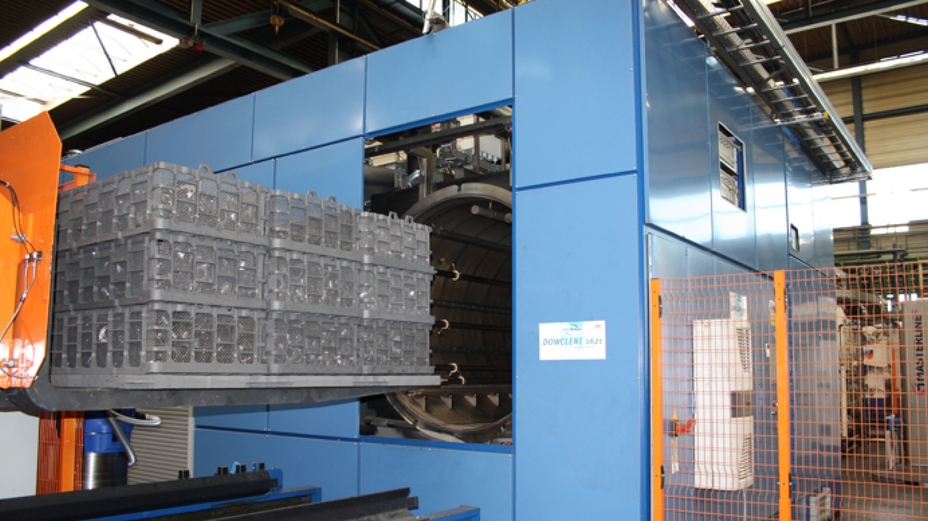
One of HEMO’s industrial cleaning systems in action. Image courtesy of HEMO
As you can imagine, this is a mammoth task, especially for those selling equipment who constantly move from one trade show to another. Then there’s the freight lorries required for transport, which operate at a significant monetary and environmental cost.
Aiming to tackle such issues, cleaning system specialist HEMO has come up with a unique shipping footprint-slashing solution – exhibiting machines virtually instead.
Industrial-scale digitization
Based in Baden-Württemberg, Germany, HEMO has spent decades consulting with leading manufacturers to help meet their solvent and hybrid cleaning system needs.
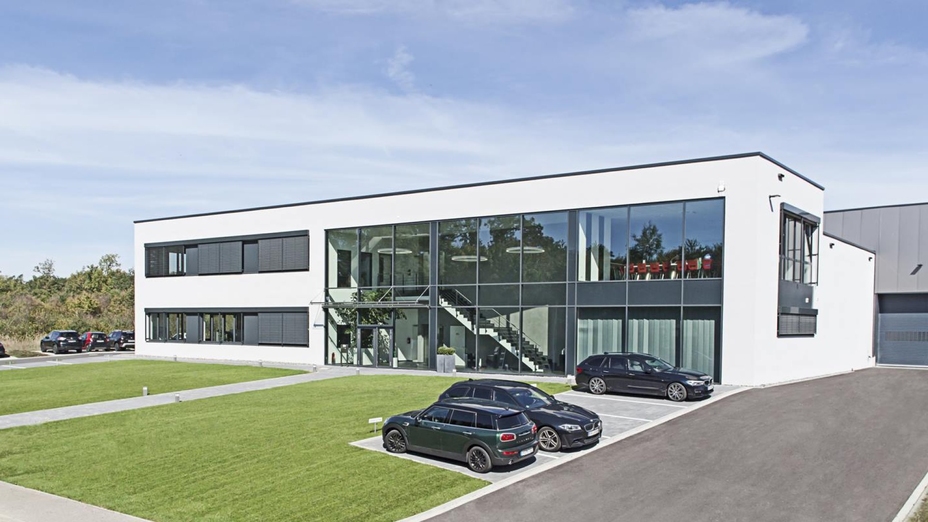
Cleaning system specialist HEMO’s HQ. Image courtesy of HEMO
Designed to clean metal parts before they’re sent for further post-processing or shipping, HEMO’s machines are highly effective at removing excess oil, dust, and chips. But they’re also colossal, weighing between 5 and 30 tons each, making them very tricky to move.
In need of an exhibition solution, HEMO reached out to Artec Ambassador algona, which suggested its machines be digitized so they could be showcased in a digital space.
“With the number of cables and pipes, capturing the machinery would be simply impossible without 3D scanning,” explained algona specialist Ramon Spiller. “It would take an incredible effort to model this manually, capturing the complete size of an object without loss of details due to interference geometries, for which there is no CAD data.”
Prepping 3D scans for VR
Digitizing the machinery came with three major challenges: precision, scale, and speed. Algona enabled HEMO to conquer all three by providing its team with the ultra-mobile Artec Leo, 130-meter-range Artec Ray II, and the training to combine them to maximum effect.
While Leo’s wireless functionality allowed the team to capture hard-to-reach places in detail, Ray II’s visual inertial system (VIS) made the large-scale digitization process quick and easy.
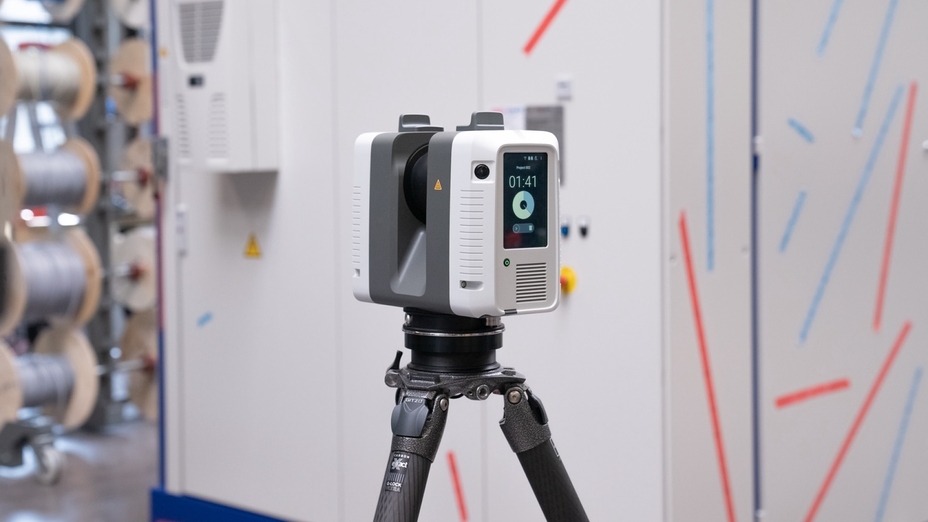
A HEMO cleaning machine being 3D scanned with Artec Ray II. Image courtesy of HEMO
To make meshes small enough to run on Microsoft HoloLens or HTC VIVE PRO headsets, but sufficiently detailed to furnish a virtual world, HEMO processed their data in Artec Studio. Using the advanced data capture and processing software, scans could be merged into incredibly lifelike meshes, made using the highest resolution data from each.
Artec Studio is also packed with advanced algorithms and mesh-editing essentials. As well as facilitating Leo and Ray II scan fusion, these ensured the process of applying texture, optimizing meshes, and exporting them as OBJ files was a seamless one.
“Thanks to VIS (which roughly aligns various scans) Ray II already ‘knows’ where it stands, so it requires almost no preparation,” added Spiller. “If we had used an ordinary cabled handheld, we may have also failed to scan all necessary areas, and for us, Artec Studio is a major milestone in scan data processing.”
Using Blender, they could then make minor texture and geometry tweaks around difficult-to-capture areas like roll-up doors before creating a ‘virtual presentation room’ for exhibitions.
Designed to look a bit like HEMO’s Technikum (Technical Center), the space itself was kept deliberately sparse, to keep attention on its machinery. Once ready, the cleaning unit model and virtual environment were then sent to Unity, where the team built their VR application.
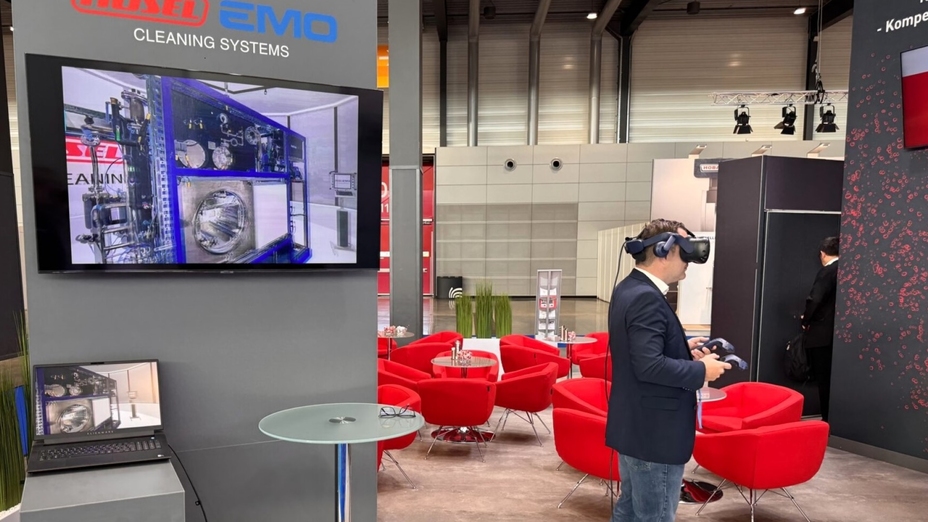
HEMO’s VR simulation being explored at a trade show. Image courtesy of HEMO
The result? A realistic VR world where users can ‘walk’ up to the machine, inspect it up close, and decide if it’s the right fit for their factory, without ever seeing it in person. Systems were even 3D scanned with and without covers attached, so users can toggle these on or off at the click of a button, lending the app an interactive dimension.
“Now, we no longer have to ship some machines to exhibitions. We can just take the glasses and show customers in VR,” said HEMO 3D modeling expert Christian Koch. “We tried it for the first time this year. As people walked by, they’d say ‘what can I see?’ or ‘can I try?’ It was a real eye-catcher!”
Envisioning a virtual future
Having exhibited machinery to great acclaim in Germany, the US, and Mexico, HEMO now plans to digitize more of its products, and experiment with other VR applications.
According to Koch, HEMO is even considering taking a 3D scanning-led approach to maintenance, diagnosing issues remotely ‘through the eyes’ of clients wearing goggles. In the meantime, he continues to seek out ways of enhancing simulation performance.
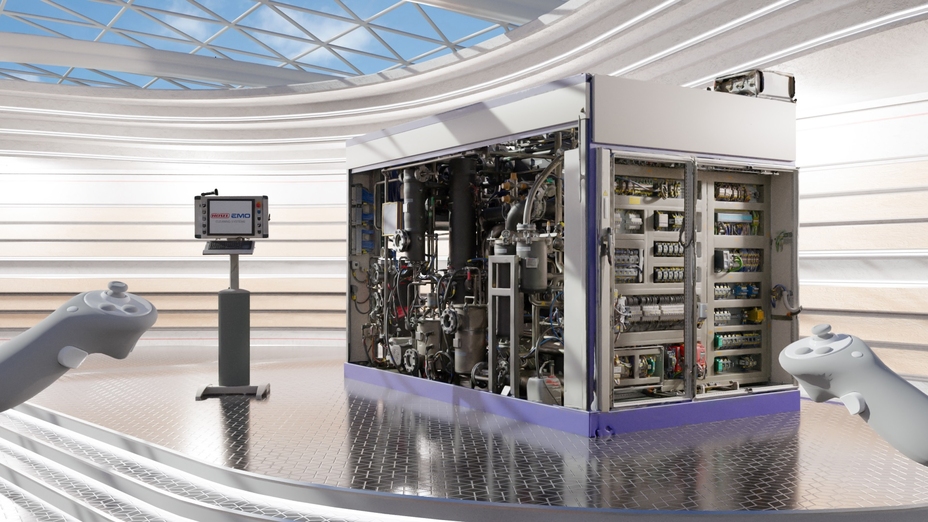
A render indicating how the VR application could look with further development. Image courtesy of HEMO
As well as weighing up hardware like the Apple Vision Pro, the firm has also reached out to a Microsoft specialist to improve app integration. With its VR capabilities advancing, Koch sees a bright future for virtual exhibitioning at HEMO, and he one day aims to make its full offering available to customers worldwide, even in the most remote locations.
“We have different parts and sizes of our machines, which meet different use cases, so we want all of them to be available as 3D models,” concluded Koch. “It’s my wish to have one showroom where you can choose a product on a tablet at the click of a button. That’s my vision for 3D scanning and VR.”
Scanners behind the story
Try out the world's leading handheld 3D scanners.





